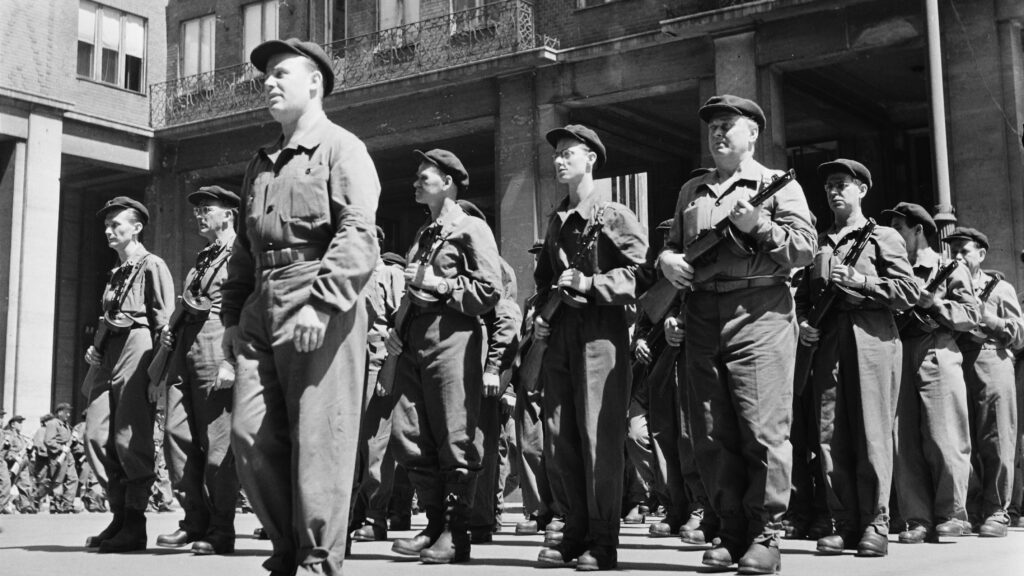The Sighting of Béla Kun in London is the title of a 1942 record in the British National Archives, where hundreds of pages of the materials of the British investigation of the former communist dictator who emigrated to the Soviet Union after the fall of the 1919 Hungarian Republic of Councils can be found.[1] The only problem with the file is that although the exact date of Kun’s execution is still unknown, it is most conservatively assumed that he died in 1939.
After the fall of the Hungarian Republic of Councils (Tanácsköztársaság in Hungarian) in 1919, Kun fulfilled an assignment in the Crimea against the rebel Tatars, but he was likely responsible for mass killings. In 1921, he attempted to organize a coup in Germany, and also fulfilled assignments in Austria and Czechoslovakia. Kun was finally arrested in June 1937 during Stalin’s purges on suspicion of Trotskyism, and the sources differ in determining the exact date of his execution; some say he was executed in August 1938, while others cite the date November 1939.
All of this did not prevent the British from tallying all the myths and legends about Kun, and sometimes they even gave credence to them. In the summer of 1936, he was known to be in South America. During the same year, there was also the question of what Great Britain would do if Béla Kun (or later the Communist dictator, then a mere apparatchik of the 1919 communist system, Mátyás Rákosi) wanted to enter its territory: ‘His Majesty’s government would not positively evaluate Kun’s application for entry’, the document claimed. According to a document from December 1936, he was traveling in Europe under the name Himler, carrying out communist assignments, which might have been true.
‘Unsubstantiated reports of his arrest have surfaced at certain intervals over the last ten years’
According to intelligence from June 1937, it was a hoax that Kun was executed in Moscow. A Reuters journalist saw him in Moscow at the funeral of Lenin’s brother. ‘Unsubstantiated reports of his arrest have surfaced at certain intervals over the last ten years,’ a press article was quoted. In the summer of 1938, according to the British secret service, he was busy arming Czech communists with the help of Felix Loria, a communist lawyer from Brno. The following news came from the summer of 1941: a German radio allegedly reported that Béla Kun had been caught by Ukrainian nationalists while he was trying to escape by plane – it is not clear from where and to where.
According to the secret service, the latter information was ‘probably false’ because ‘according to the German press, Kun was executed in Moscow three years ago’. In the summer of 1942, a woman thought she had seen Kun in London, and at the end of the year he was sighted in Ireland. ‘As we know, Béla Kun was allegedly shot in the Soviet Union in 1937, but this was later denied by official Russian circles’, wrote the investigators. By then, the British secret service had already taken seriously the German hoax that Kun was alive – apparently as a result of the “sightings”.
At the end of the year, there were very specific reports that Kun was an employee of the Soviet embassy in London. ‘Kun is known to always visit certain countries before a revolution breaks out there’, it was noted in his file.
After that, no events worth recording were noticed for ten years, until 1952. Based on press clippings, it emerged that Béla Kun might be active in American communist circles, and might even visit Great Britain in the future.
At the end of 1952, the British Immigration Department approached the secret service with the topic of their ongoing search for Kun, even though they themselves noted that he died ‘in the second half of the [second world] war’; the latter was obviously not true. ‘Would they be able to clarify, based on their data, whether he is still alive, and if not, can we withdraw the warrant?’ Their answer only outlined what was basically known to them so far: According to German sources, Kun was still alive in 1942, and perhaps he was an employee of the Soviet embassy in London. In the last days of December 1952, the British finally established—based on the literature (according to Ruth Fischer’s book titled Stalin and German Communism)—that Kun was certainly executed in 1937.
Based on the above, the warrant was withdrawn and the “specter haunting Europe” was no longer pursued.
[1] For this and all subsequent quotes see: The National Archives (Kew), KV 2/577-578.







